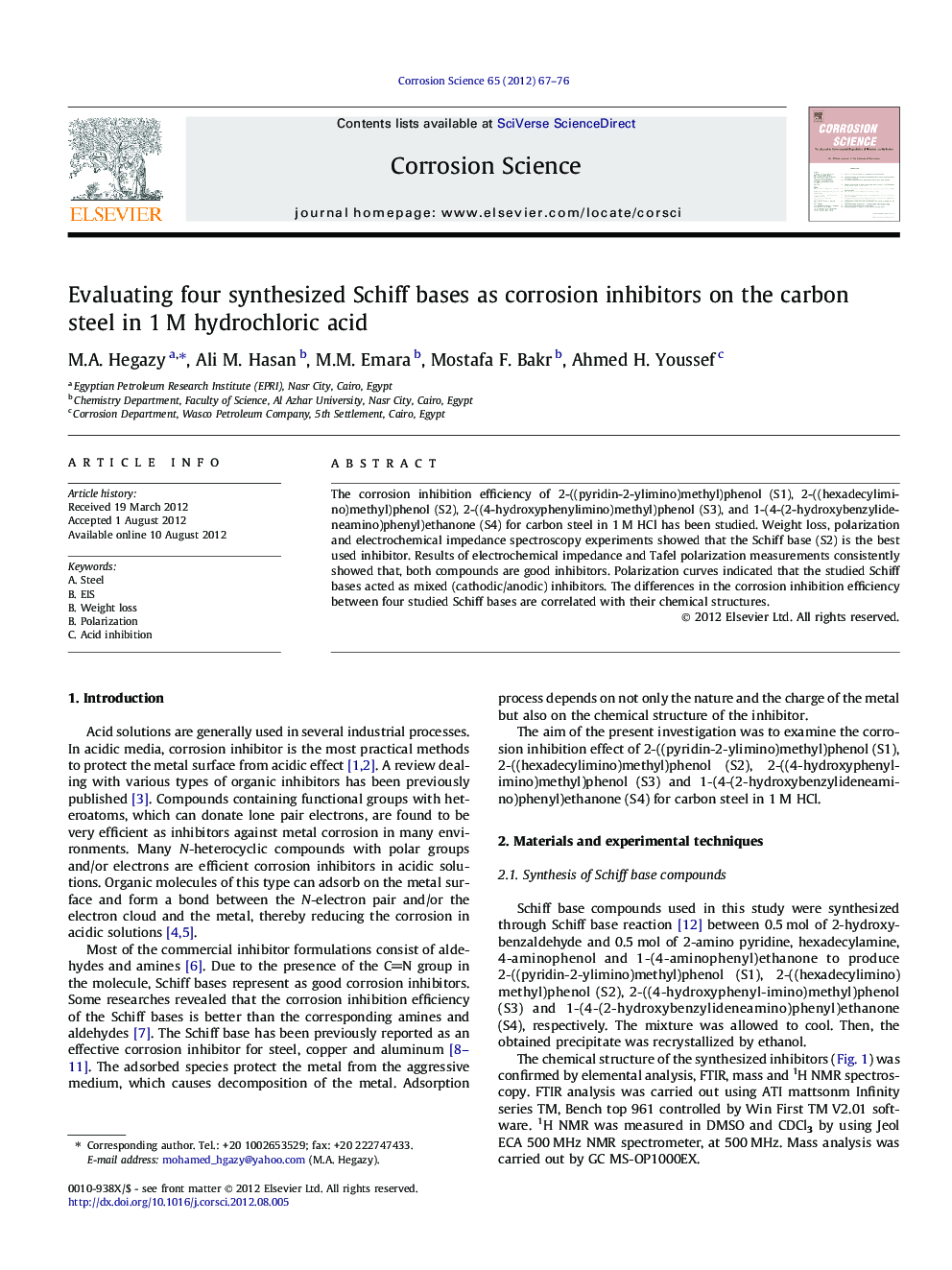| Article ID | Journal | Published Year | Pages | File Type |
|---|---|---|---|---|
| 1469468 | Corrosion Science | 2012 | 10 Pages |
The corrosion inhibition efficiency of 2-((pyridin-2-ylimino)methyl)phenol (S1), 2-((hexadecylimino)methyl)phenol (S2), 2-((4-hydroxyphenylimino)methyl)phenol (S3), and 1-(4-(2-hydroxybenzylideneamino)phenyl)ethanone (S4) for carbon steel in 1 M HCl has been studied. Weight loss, polarization and electrochemical impedance spectroscopy experiments showed that the Schiff base (S2) is the best used inhibitor. Results of electrochemical impedance and Tafel polarization measurements consistently showed that, both compounds are good inhibitors. Polarization curves indicated that the studied Schiff bases acted as mixed (cathodic/anodic) inhibitors. The differences in the corrosion inhibition efficiency between four studied Schiff bases are correlated with their chemical structures.
Graphical abstractFigure optionsDownload full-size imageDownload as PowerPoint slideHighlights► Schiff bases as corrosion inhibitor for carbon steel in 1.0 M HCl. ► The inhibition efficiency increased in the order of Schiff bases S2 > S3 > S1 > S4. ► The polarization studied indicated that the inhibitors act as a mixed type inhibitor. ► An equivalent circuit is suggested based on analysis of EIS data. ► Adsorption process obeyed Langmuir isotherm and regarded as physical adsorption.
